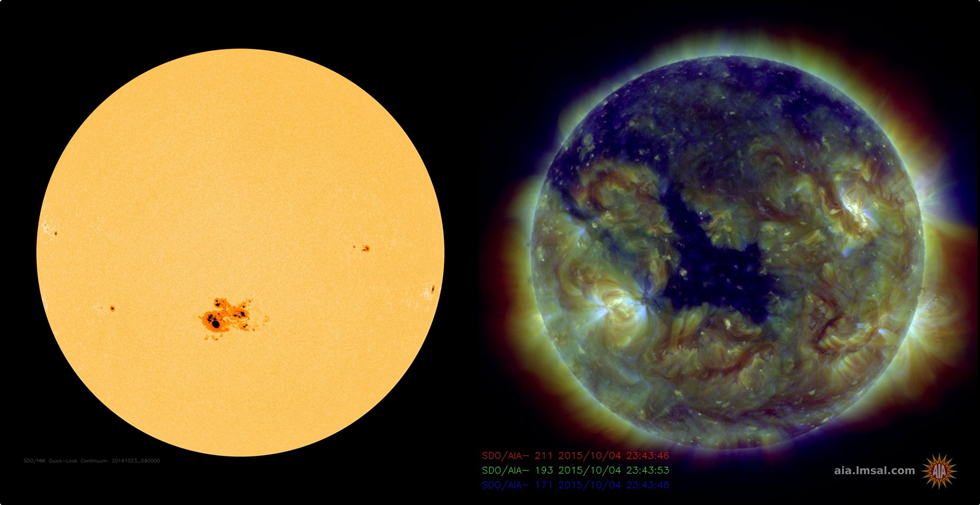On 04 October, a rather large transequatorial coronal hole (CH) transited the Sun's central meridian. According to LMSAL data, it had a surface area of nearly 150 times that of the Earth. For comparison: NOAA 2192, the largest sunspot group so far this solar cycle, was about 9 times smaller!


Already three days later, around noon on 07 October, the high speed stream of this CH arrived at Earth. The solar wind speed gradually increased to a swift 800 km/s, and values greater than 600 km/s were recorded for nearly 3 days. The graph below (courtesy from ACE Science Center) shows the evolution of the wind speed from 6 till 10 October 2015 (day-of-year 279 till 283). The maximum (5-minutes average) speed was 817 km/s on 08 October at 08:20UT. ACE, the Advanced Composition Explorer satellite, was launched on 25 August 1997 and is providing measurements of the solar wind from the L1 Lagrange point already for 18 years.

It is quite rare that solar wind speeds near the Earth reach 800 km/s or more. A quick analysis of the quicklook data at ASC is quite revealing in this respect. As it turns out, this was only the 2nd time this year that solar wind speeds reached these high values, and only the 7th time so far this solar cycle. Rare indeed! The highest solar wind speed recorded at Earth so far this solar cycle was on 13 January 2014 when a value of 907 km/s was recorded. Since the start of the ACE measurements, 2003 stands out both in number as in top speeds with resp. more than 20 events and more than 1100 km/s. The latter was related to the Halloween events.

 |
 |





